Architectural Wonders of Cascais
Embark on a free walking tour exploring the architectural gems and interesting places of Cascais, uncovering its rich history and vibrant culture.
Time
3 Hours
Stops
9 Places
Distance
4.8 km
Cascais Train Station
Start your tour at the Cascais Train Station, a gateway to the town that showcases charming early 20th-century architecture.
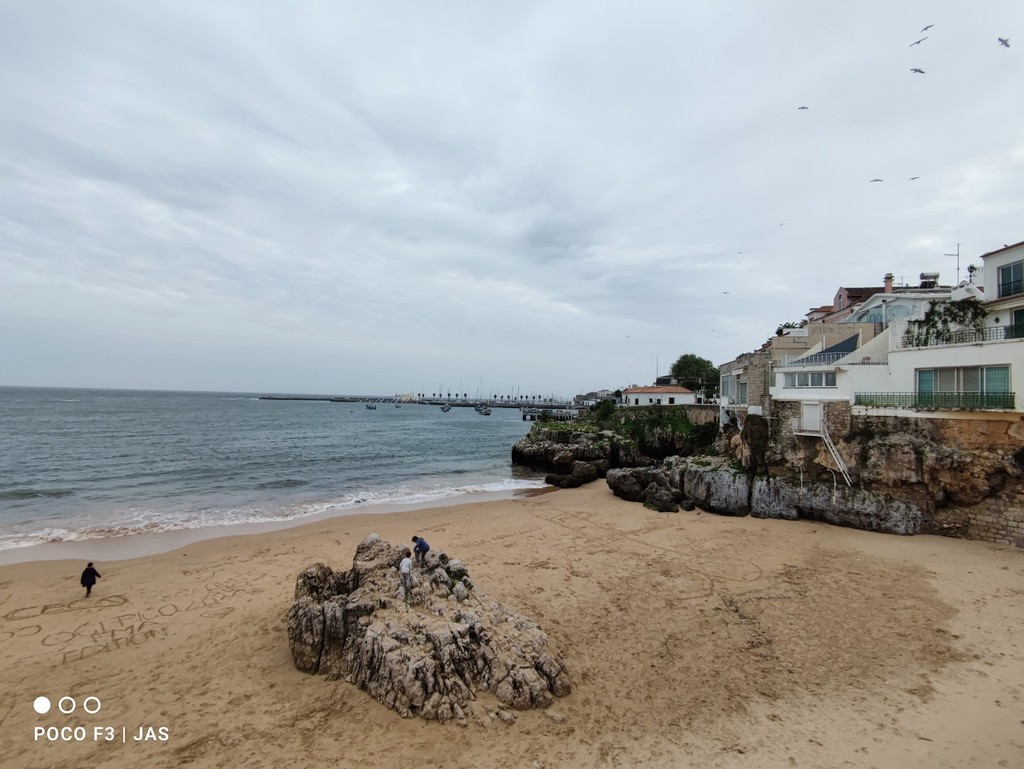
Cascais Train Station (Source: Google Maps)
Cascais Train Station, a beautiful example of early 20th-century architecture, serves as the gateway to this coastal town. Built in 1889, it features traditional Portuguese tiles known as azulejos, which depict maritime scenes and historical events. The station's charming design includes intricate wrought iron details and a picturesque façade that captures the essence of Cascais. It not only offers visitors access to the stunning coastline but also reflects the town's growth as a popular holiday destination, attracting both locals and tourists. The station's historical significance is further enhanced by its role in connecting Cascais to Lisbon, making it a vital transport hub. Today, the station stands as a testament to the town's architectural heritage and is a must-see for anyone interested in the history of Portuguese rail transport.
Casa de Santa Maria
Discover Casa de Santa Maria, an elegant mansion that blends diverse architectural styles and offers insights into Cascais' aristocratic past.
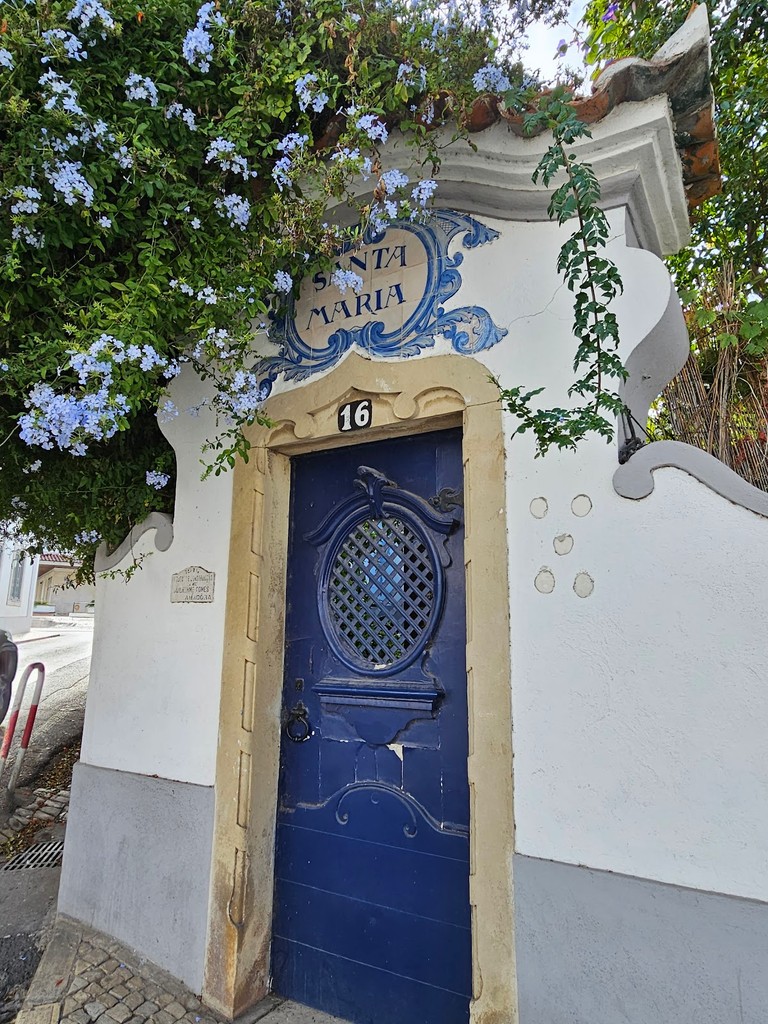
Casa de Santa Maria (Source: Google Maps)
Casa de Santa Maria is an elegant mansion that showcases a fascinating blend of architectural styles, including neo-Manueline and Moorish influences. Built in the early 20th century for a wealthy Portuguese family, the mansion reflects the opulence of Cascais' aristocratic past. The interior is adorned with exquisite tile work, ornate ceilings, and luxurious furnishings, offering a glimpse into the lifestyle of the elite. The house is surrounded by beautiful gardens that enhance its grandeur, providing a serene escape from the bustling town. Casa de Santa Maria is not just a stunning architectural gem; it also serves as a cultural landmark, hosting various art exhibitions and events that celebrate the rich artistic heritage of Cascais. Visitors can explore the carefully curated spaces and appreciate the historical significance of this magnificent residence.
Parque Marechal Carmona
Enjoy a leisurely stroll through Parque Marechal Carmona, a lush green space perfect for relaxation and observing local flora and fauna.
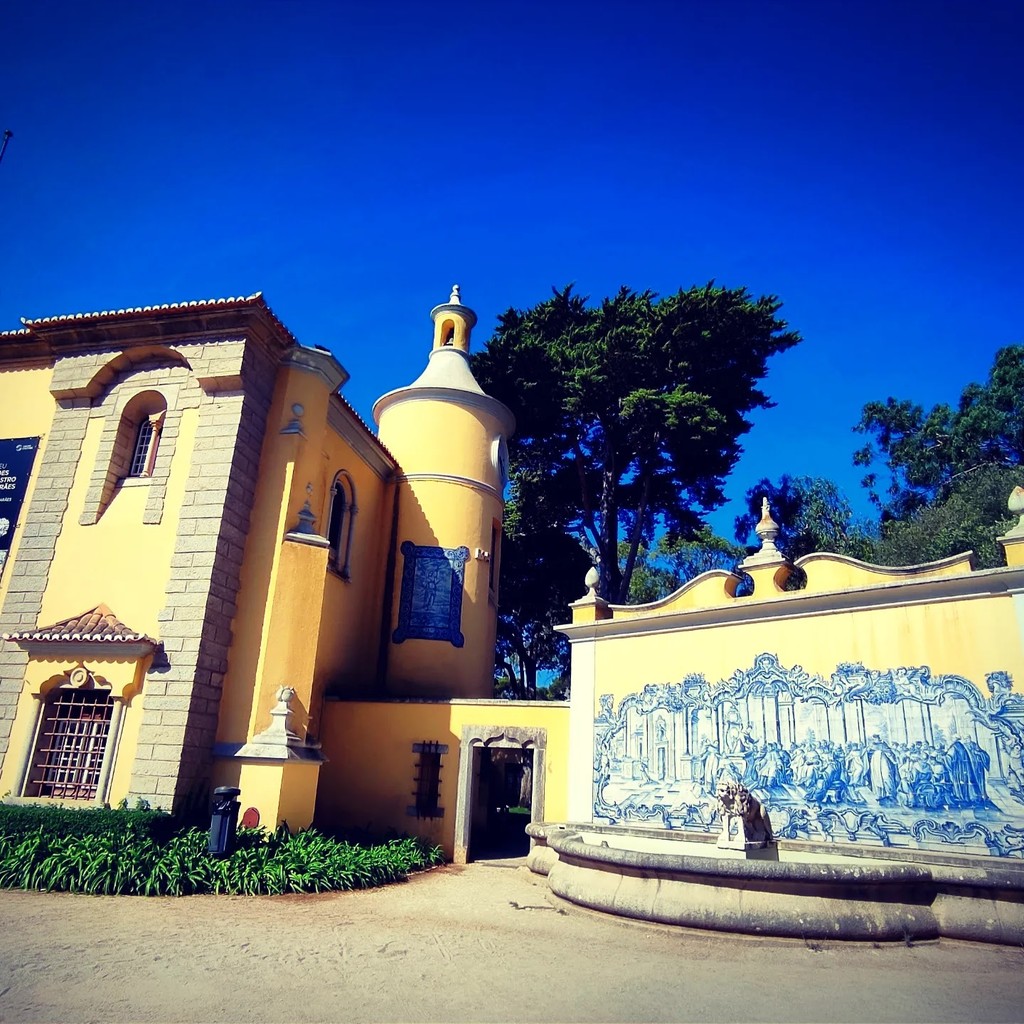
Parque Marechal Carmona (Source: Google Maps)
Parque Marechal Carmona is a lush green oasis in the heart of Cascais, perfect for leisurely strolls and relaxation. Established in the early 20th century, the park features beautifully landscaped gardens, tranquil ponds, and diverse flora and fauna. One of its main attractions is the charming old mansion, which now houses a small museum. The park is a haven for locals and tourists alike, offering a peaceful retreat from the town's hustle and bustle. Visitors can enjoy picnicking, birdwatching, or simply soaking up the natural beauty of the surroundings. The park also hosts various cultural events and activities throughout the year, making it a vibrant part of the community. With its combination of natural beauty and cultural significance, Parque Marechal Carmona is an essential stop for anyone exploring Cascais.
Casa das Histórias Paula Rego
Visit the Casa das Histórias Paula Rego, a striking modern building dedicated to the works of the renowned Portuguese artist Paula Rego.
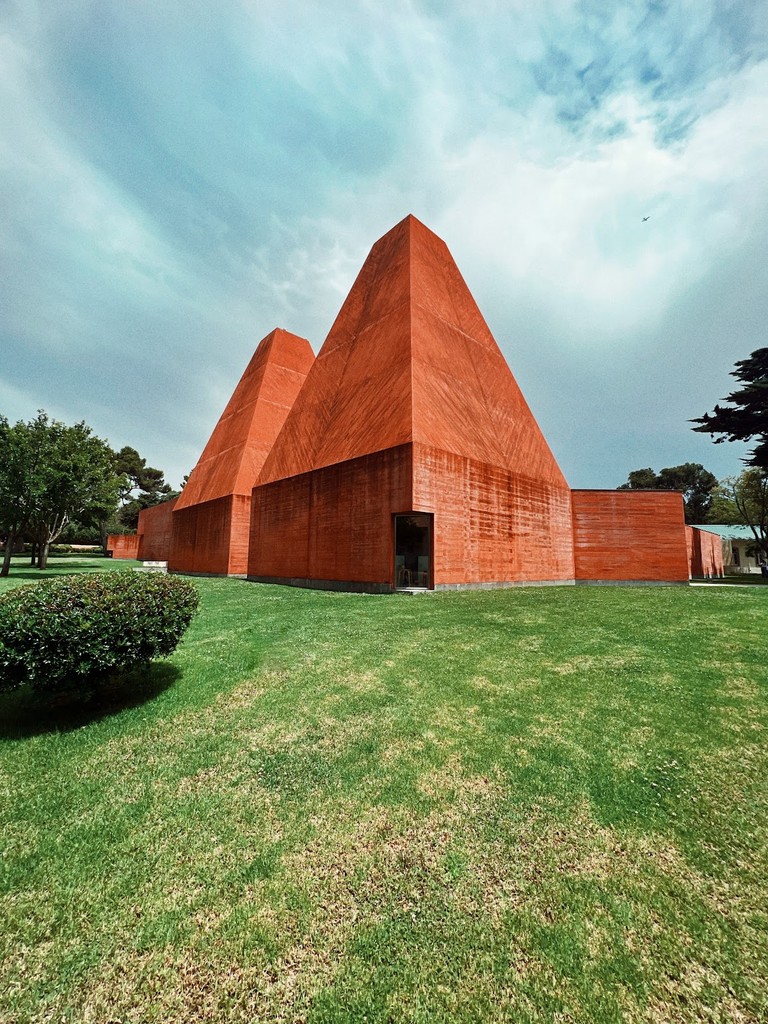
Casa das Histórias Paula Rego (Source: Google Maps)
Casa das Histórias Paula Rego is a striking modern museum dedicated to the works of renowned Portuguese artist Paula Rego. Opened in 2009, the building itself is a work of art, designed by architect Eduardo Souto de Moura. Its bold, contemporary architecture contrasts beautifully with the surrounding landscape. The museum houses a vast collection of Rego's paintings, drawings, and prints, showcasing her unique style and storytelling ability. The exhibitions often explore themes of feminism, childhood, and the human experience, making them thought-provoking and engaging. In addition to Rego's works, the museum frequently hosts temporary exhibitions featuring other artists, further enriching the cultural landscape of Cascais. Visitors can enjoy guided tours and workshops, making Casa das Histórias a dynamic space for art lovers and anyone interested in contemporary culture.
Boca do Inferno
Witness the dramatic coastal cliffs at Boca do Inferno, a natural landmark known for its breathtaking ocean views and powerful waves.
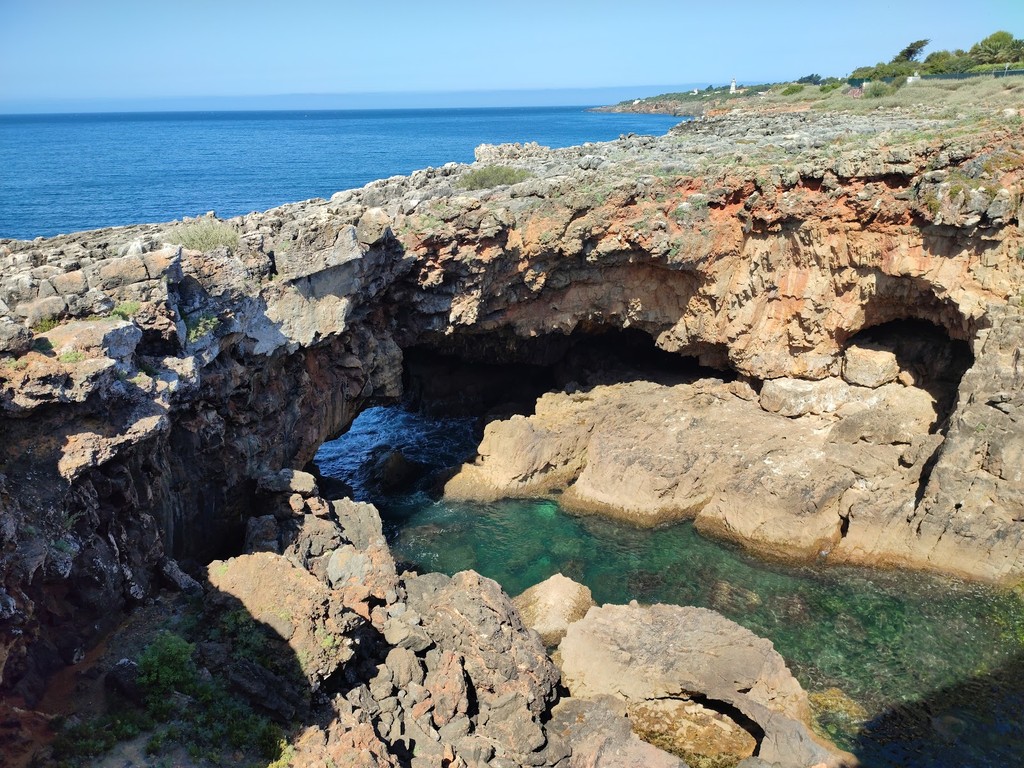
Boca do Inferno (Source: Google Maps)
Boca do Inferno, or 'Hell's Mouth,' is a dramatic natural landmark located along the coastline of Cascais. This stunning cliff formation is known for its powerful waves and breathtaking ocean views, making it a popular spot for both locals and tourists. The name Boca do Inferno comes from the thunderous sound of the waves crashing into the rocky caves below, creating an awe-inspiring spectacle. The cliffs are composed of limestone and have been shaped by centuries of erosion, resulting in unique geological formations. Visitors can explore the area, taking in the stunning vistas and observing the rich marine life along the shores. Boca do Inferno is also steeped in local folklore, with tales of sea monsters and shipwrecks adding to its intrigue. As one of Cascais' most iconic natural sites, it is a must-visit for anyone seeking to experience the beauty of Portugal's coastline.
Santa Marta Lighthouse Museum
Head to the Santa Marta Lighthouse Museum, where maritime history and stunning ocean views converge.
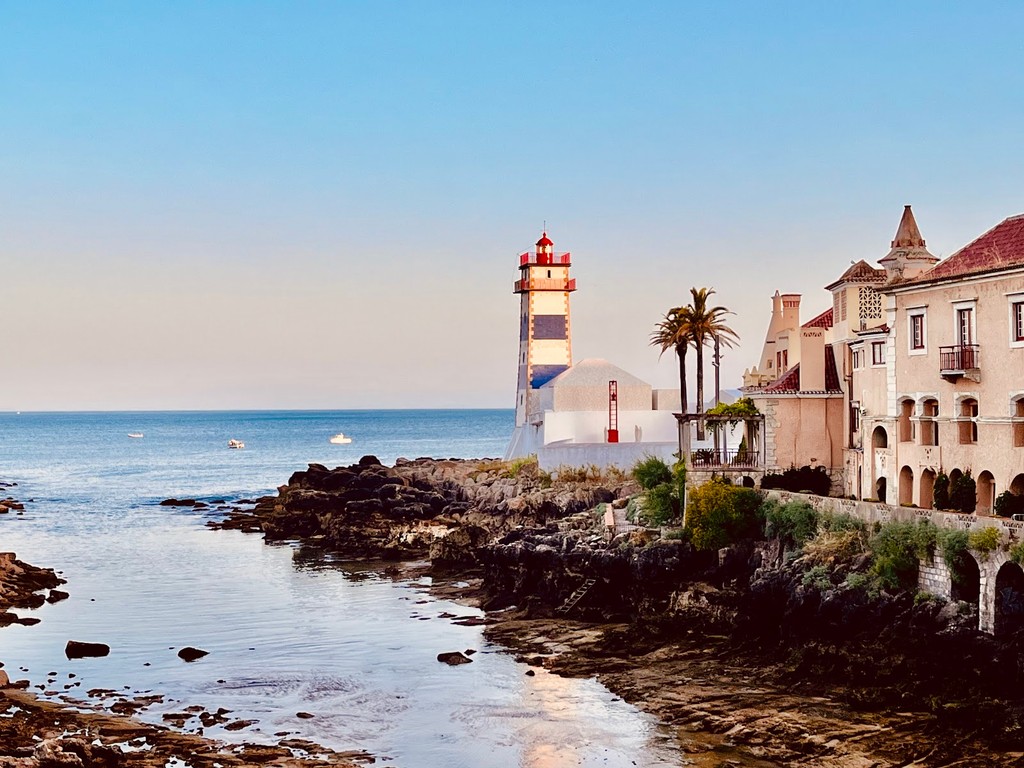
Santa Marta Lighthouse Museum (Source: Google Maps)
The Santa Marta Lighthouse Museum is a captivating blend of maritime history and stunning ocean views. Located on the picturesque Santa Marta Peninsula, the lighthouse was built in 1868 to guide ships safely along the treacherous coastline. The museum offers visitors a chance to learn about the history of lighthouses in Portugal and the vital role they play in navigation. Inside, the museum features exhibits showcasing the evolution of maritime technology and the lives of lighthouse keepers. The panoramic views from the lighthouse are breathtaking, providing a unique perspective of the coastline and the Atlantic Ocean. The surrounding area is also home to beautiful walking paths and gardens, making it a perfect spot for a leisurely visit. The Santa Marta Lighthouse Museum not only serves as a historical landmark but also as a place of inspiration for those interested in the sea and its stories.
Museu Condes de Castro Guimarães
Explore the Museu Condes de Castro Guimarães, a beautiful example of Romantic architecture housing an impressive art collection.
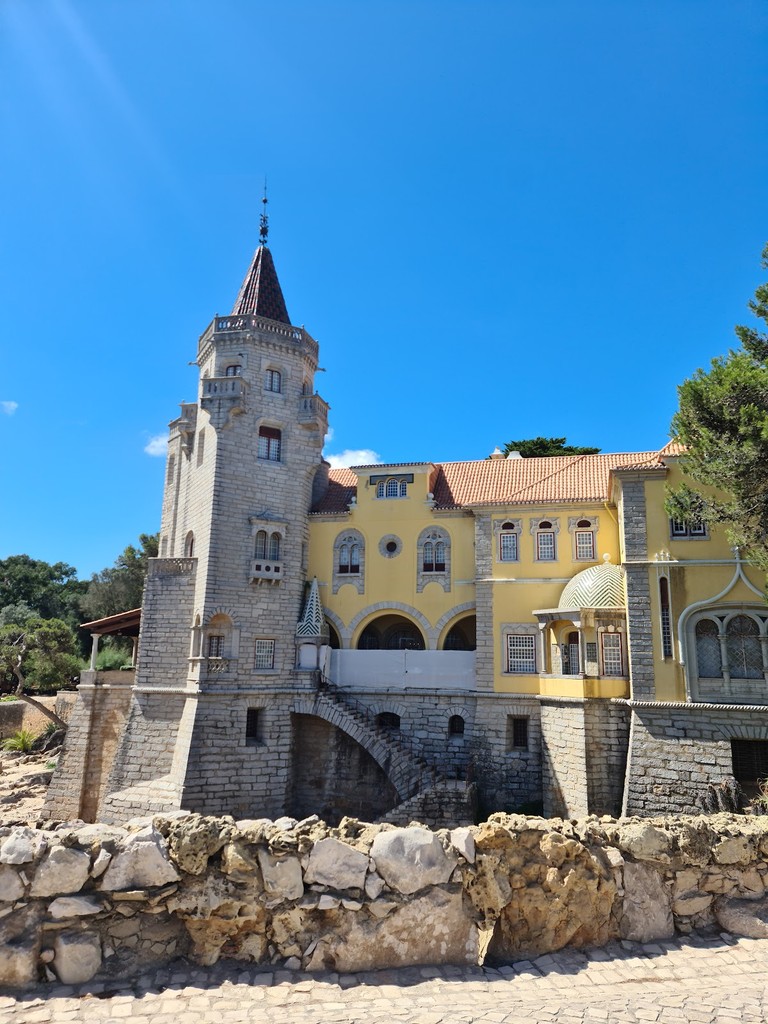
Museu Condes de Castro Guimarães (Source: Google Maps)
Museu Condes de Castro Guimarães is a stunning example of Romantic architecture, located in a beautiful park setting. Built in the early 20th century, the museum was originally a private residence for the Condes de Castro Guimarães. The building features intricate details, including decorative tiles and ornate woodwork, reflecting the artistic styles of its time. Inside, the museum houses an impressive collection of art and artifacts, including paintings, sculptures, and decorative arts that span several centuries. The museum's collection highlights the cultural heritage of Cascais and the surrounding region, making it a valuable resource for art enthusiasts and historians. The picturesque gardens surrounding the museum provide a serene backdrop for visitors, who can enjoy leisurely walks while taking in the beauty of the architecture and the natural landscape. The Museu Condes de Castro Guimarães is a must-visit for anyone exploring the rich history and culture of Cascais.
Cascais Citadel
Walk to the Cascais Citadel, a historical fortress that offers a glimpse into the town's military past and stunning views of the harbor.
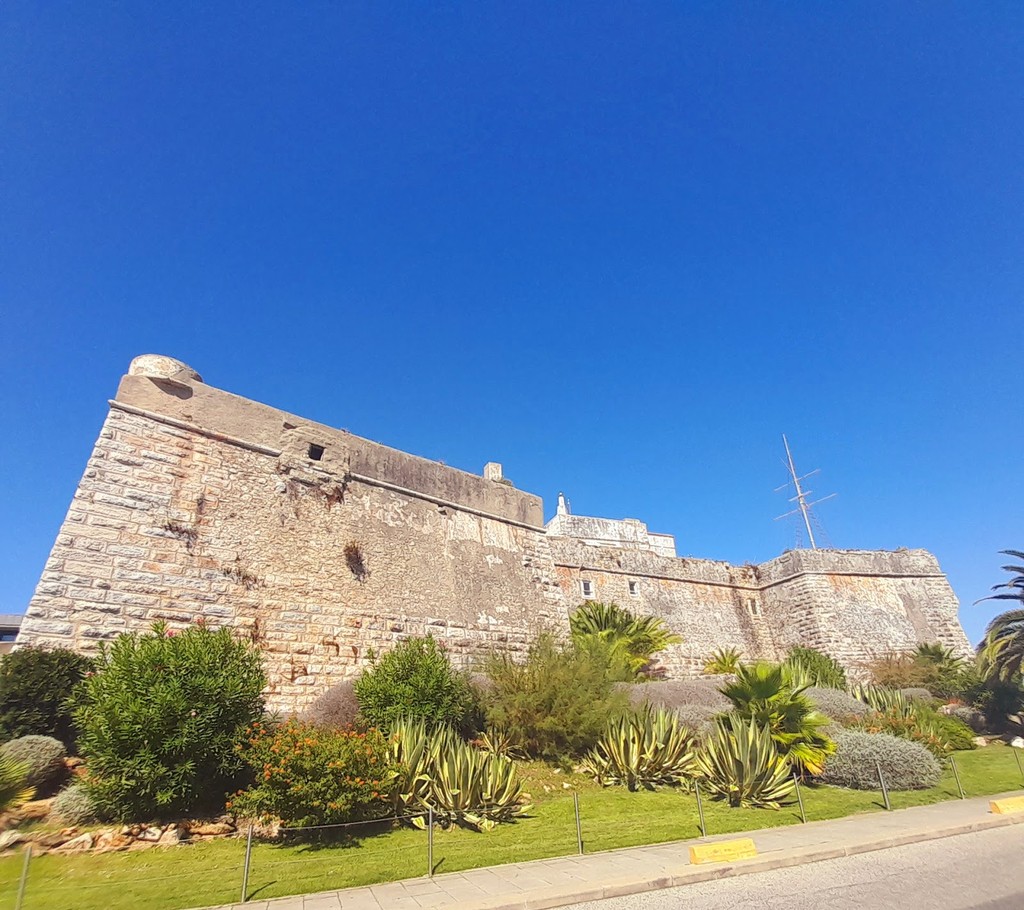
Cascais Citadel (Source: Google Maps)
Cascais Citadel is a historical fortress that offers a fascinating glimpse into the town's military past. Originally built in the 16th century to protect the coast from pirates and invaders, the citadel has been expanded and renovated over the centuries. Its strategic location overlooking the harbor provides stunning views of the Atlantic Ocean and the surrounding coastline. The architecture of the citadel reflects various styles, including Manueline and Renaissance influences, making it an interesting study for architecture enthusiasts. Today, the citadel houses several museums and cultural spaces, including art exhibitions and historical displays that tell the story of Cascais' development. Visitors can explore the well-preserved walls and bastions, taking in the panoramic views and learning about the fortress's significance in Portugal's maritime history. Cascais Citadel is a vital part of the town's heritage and a must-see for anyone interested in its historical narrative.
Praia da Rainha
Conclude your tour at Praia da Rainha, a picturesque beach where you can relax and reflect on the day's exploration.
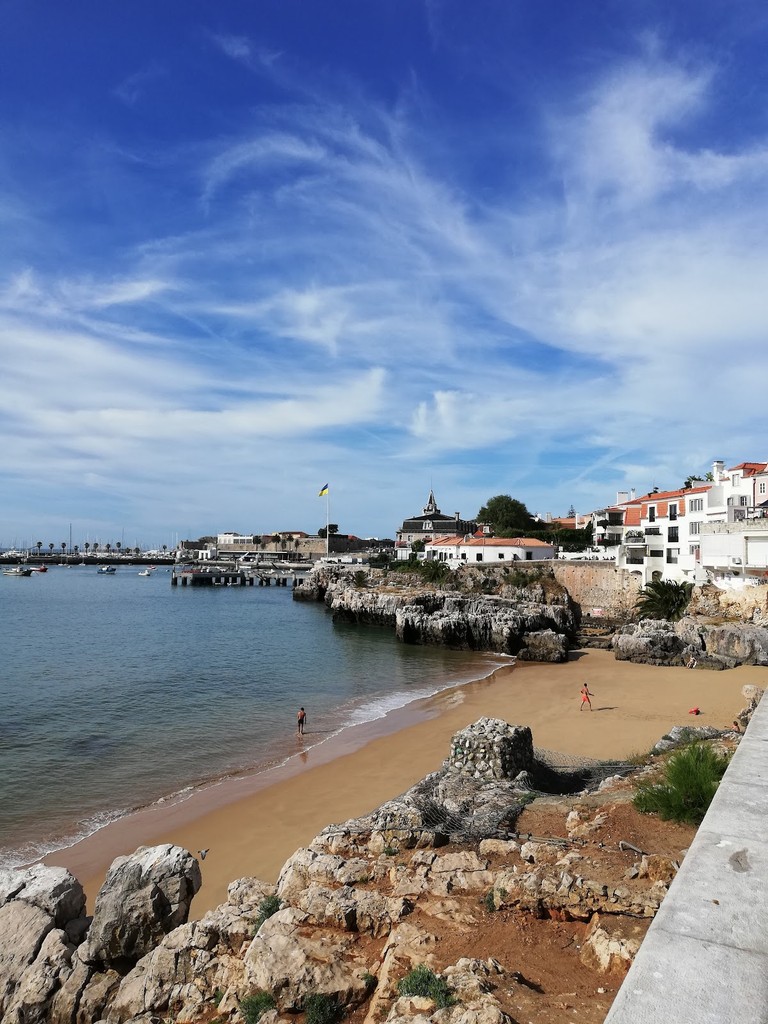
Praia da Rainha (Source: Google Maps)
Praia da Rainha is a picturesque beach that serves as the perfect conclusion to your exploration of Cascais. Nestled between dramatic cliffs, this small sandy cove is known for its crystal-clear waters and stunning views of the ocean. The beach is popular among both locals and tourists, offering a relaxing spot to unwind after a day of sightseeing. The surrounding area is dotted with charming cafés and restaurants, where visitors can enjoy fresh seafood and traditional Portuguese cuisine while soaking in the beautiful scenery. Praia da Rainha is also steeped in history, with legends of shipwrecks and pirate tales adding to its allure. As you relax on the beach, take a moment to reflect on the rich cultural heritage of Cascais and the architectural wonders you've encountered throughout the tour. With its idyllic setting, Praia da Rainha is the ideal place to conclude your journey.

Your travels, your rules.
Create your own Free Walking Tours.
Set your preferences, distances and anything you want to do or see.
Completely free, no payment required.